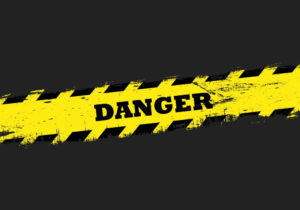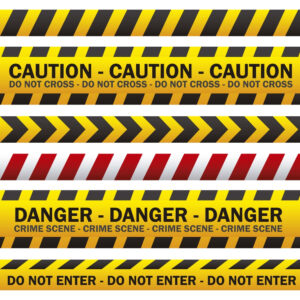What is warning Tapes?
Warning tapes are typically brightly colored adhesive tapes with printed warning messages or patterns. They are used to visually alert people to potential hazards, dangers, or restricted areas. Warning tapes are commonly used in construction sites, industrial facilities, crime scenes, and other situations where safety and caution are required. The tapes may feature cautionary messages, such as “Caution,” “Danger,” “Do Not Enter,” or specific warning symbols. They serve as a visual cue to help prevent accidents, control access, and communicate important safety information.
 What is Caution tapes?
What is Caution tapes?
Caution tapes, also known as caution barricade tapes or caution barrier tapes, are brightly colored adhesive tapes that are used to indicate potential hazards or dangers. They are typically yellow with black printed text or symbols. Caution tapes are commonly used in various settings, including construction sites, crime scenes, accident areas, and industrial facilities, to alert people to exercise caution and be aware of potential risks. They serve as a visual barrier and warning signal, helping to prevent accidents, control access, and communicate important safety information.
What is the difference between caution tapes and Warning tapes?
The terms “caution tape” and “warning tape” are often used interchangeably, and there is no universally standardized distinction between them. However, in general, the difference between caution tape and warning tape lies in their color and the level of severity they convey.
Caution tape is typically yellow in color and is used to indicate a moderate level of caution or a potential hazard that may require people to be cautious or aware of their surroundings. It is commonly used to mark temporary hazards, construction areas, or areas undergoing maintenance.
Warning tape, on the other hand, is usually red or orange in color and signifies a higher level of danger or a more severe hazard. It is used to alert people to a potentially hazardous situation that requires immediate attention or avoidance. Warning tape is often used in situations such as restricted areas, danger zones, or areas with a significant risk to safety.
It’s important to note that the specific meanings and colors of caution tape and warning tape can vary depending on local regulations, industry standards, or specific applications. It’s always recommended to follow any specific guidelines or instructions provided by relevant authorities or safety professionals when using these tapes.
What is a barricade tape?

A barricade tape is a type of tape used to create a visual barrier or perimeter to restrict access to a specific area. It is typically made of durable, brightly colored plastic or fabric material and is often printed with cautionary messages, warning symbols, or other relevant information. Barricade tapes are commonly used in various situations, including construction sites, crime scenes, accident areas, public events, and hazardous zones.
The primary purpose of barricade tape is to communicate and enforce restrictions or warnings to people, preventing them from entering a particular area. It helps to ensure safety, maintain order, and prevent accidents or unauthorized access. Barricade tapes are available in different colors, with each color often associated with a specific meaning or purpose. For example, yellow or caution-colored tapes are generally used to indicate potential hazards or areas that require caution, while red or danger-colored tapes may signify high-risk areas or areas with immediate danger. The specific color and message on the tape can vary depending on local regulations, industry standards, or the specific purpose for which it is used. Its recommended for high visibility. The tape comes in red & white color, which catches your attention & provides safety to people walking on the road.
When was Barricade Tape first used?
The use of barricade tape dates back to the early 20th century, although it’s difficult to pinpoint an exact date for its first use. The concept of using visual barriers to cordon off areas or indicate potential hazards has been employed for decades.
One of the earliest documented uses of barricade tape was during World War II when it was used to mark off restricted or dangerous areas, such as bomb sites or areas contaminated with chemical agents. It helped to alert and protect civilians from potential harm.
Since then, the use of barricade tape has expanded to various industries and contexts where safety and crowd control are essential. It has become a standard tool in construction, law enforcement, emergency services, event management, and many other fields.
Over the years, barricade tapes have evolved in terms of materials, durability, and the printed messages or symbols they display. They continue to play a crucial role in maintaining safety and communication in a wide range of situations.
How thick is Barrication tape?
Barricade tapes are available in different thicknesses, and the specific thickness can vary depending on the manufacturer and intended use. Typically, barricade tapes range in thickness from around 2 to 6 mils (0.002 to 0.006 inches or 0.05 to 0.15 mm).
Thinner barricade tapes, around 2 to 3 mils, are often used for temporary applications or indoor settings where the risk of damage or wear is lower. Thicker tapes, around 4 to 6 mils, are commonly used for outdoor or more rugged environments where greater durability is required.
It’s worth noting that while thickness is one aspect of barricade tape’s overall durability, factors such as material quality, reinforcement, and weather resistance can also affect its strength and longevity. It’s always a good idea to check the specifications provided by the manufacturer or consult local regulations and guidelines to ensure the appropriate thickness for your specific application.
When was police line tape first used, and what did they use before it?
Police line tape, also known as crime scene tape or police barrier tape, was first introduced in the mid-20th century as a means to establish a visible and easily recognizable boundary around crime scenes or other police operations. It is difficult to pinpoint an exact date for its first use, as the adoption of police line tape varied across different regions and police departments.
Before the introduction of police line tape, law enforcement agencies used alternative methods to mark and secure crime scenes. These methods included physical barriers like ropes, chains, or cones, as well as the presence of police officers to prevent unauthorized access. However, these methods were often less visible, less efficient in terms of time and resources, and more prone to potential disturbances.
The advent of police line tape provided a more standardized and readily deployable solution. Its bright colors, usually yellow with “Police Line” or similar printed messages, helped establish clear boundaries and visually communicate to the public the restricted nature of the area.
Since its introduction, police line tape has become a common tool used by law enforcement agencies worldwide to secure crime scenes, accident areas, or any situation where establishing a visible boundary and preserving the integrity of the scene is crucial for investigations and public safety.
How many types of Warning Tape are there?
There are several types of warning tapes available, each serving a specific purpose or industry. Here are some common types of warning tapes:
Caution Tape: Caution tape is often yellow and is used to indicate a moderate level of caution or potential hazards that require people to be careful and aware of their surroundings.

Danger Tape: Danger tape is usually red or orange and signifies a high level of danger or a severe hazard. It is used to alert people to potentially life-threatening situations that require immediate attention or avoidance.
Restricted Area Tape: Restricted area tape is typically red and white or black and yellow and is used to mark off areas that are off-limits or restricted to authorized personnel only.
Crime Scene Tape: Crime scene tape, also known as police line tape or forensic tape, is used by law enforcement to establish boundaries around crime scenes or areas of investigation.
 Fire Line Tape: Fire line tape is typically red and white and is used by firefighters or emergency responders to create a perimeter around fire incidents or hazardous areas.
Fire Line Tape: Fire line tape is typically red and white and is used by firefighters or emergency responders to create a perimeter around fire incidents or hazardous areas.
Biohazard Tape: Biohazard tape is usually yellow with black biohazard symbols and is used to identify and cordon off areas that pose a biological or infectious hazard.
These are just a few examples of warning tapes, and there may be variations or specialized types of warning tapes based on specific industries, regulations, or applications. It’s essential to choose the appropriate type of warning tape based on the specific warning or restriction you need to communicate.
How many types of warning tape are there mainly?

While it is true that caution tape and danger tape are commonly used in construction to communicate different levels of hazard, it’s important to note that the specific meanings and colors of caution tape and danger tape can vary depending on local regulations, industry standards, or specific applications.
In some cases, yellow caution tape is indeed used to indicate a moderate level of caution or potential hazards that require people to be careful and aware of their surroundings. It serves as a visual cue to exercise discretion and proceed with caution.
On the other hand, red danger tape is often used to signify a higher level of danger or a more severe hazard. It can indicate areas that pose a significant risk to safety, and entry should be strictly prohibited.
However, it’s crucial to follow any specific guidelines or instructions provided by local authorities, construction site managers, or safety professionals when it comes to the specific colors and meanings of caution tape and danger tape in your region or industry. These guidelines may vary, and it’s important to adhere to the applicable standards and regulations to ensure safety on construction sites.
Why only yellow color warning tape used for caution?
Yellow is commonly used for caution tape because it has been widely adopted as the standard color to signify caution and to indicate a moderate level of potential hazards. There are a few reasons why yellow is chosen for this purpose:
Visibility: Yellow is a highly visible color that stands out against most backgrounds. It attracts attention and effectively catches the eye, making it an ideal choice for warning tape that needs to be easily seen from a distance or in various lighting conditions.
Universal Understanding: Yellow is associated with caution and is widely recognized as a warning color. It has become a standardized visual cue for caution and serves as a universally understood symbol for potential hazards or the need to exercise care.
Differentiation: Using a distinct color like yellow for caution tape helps differentiate it from other types of warning tapes, such as danger tape (typically red or orange) or restricted area tape (often red and white or black and yellow). This differentiation allows for clear communication and helps people quickly understand the level of risk or restriction associated with the tape.
While yellow is the most common color used for caution tape, it’s important to note that local regulations, industry standards, or specific applications may dictate the use of other colors or variations. Always follow the applicable guidelines and regulations in your region or industry to ensure the proper use of warning tapes.
Send Your Enquiry Now.
 What is Caution tapes?
What is Caution tapes?